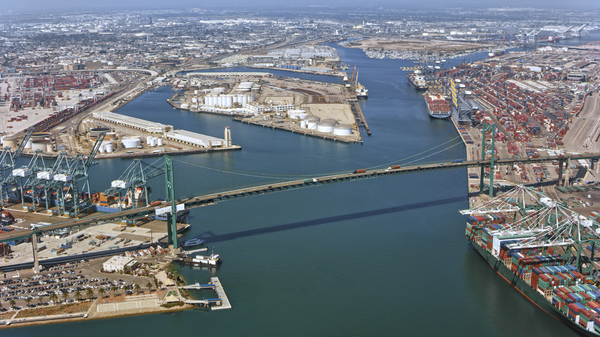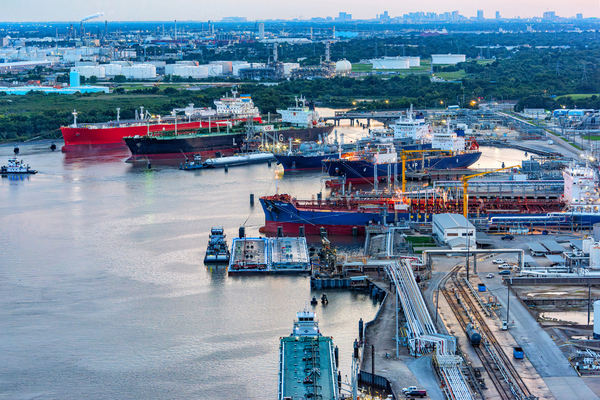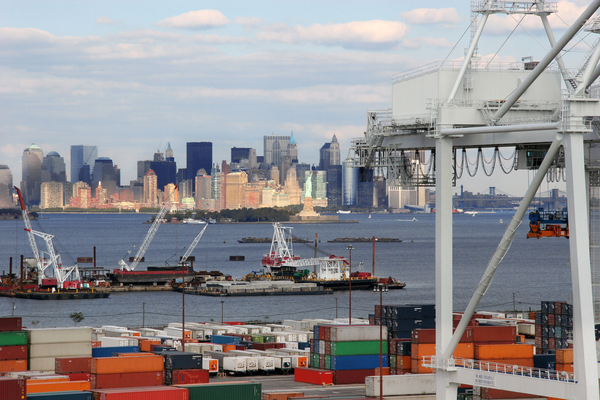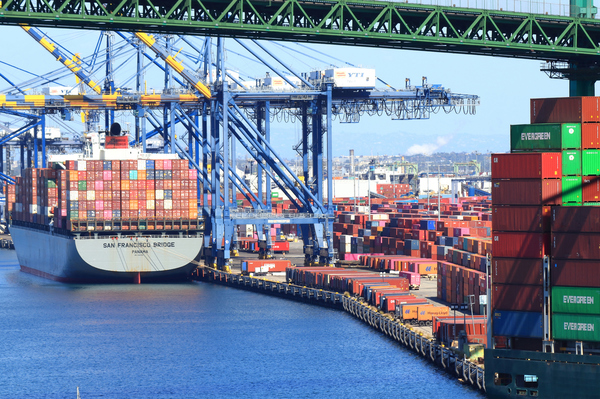Americas Fuel Availability Outlook 5 June 2025
Bunker demand low in Houston
Los Angeles import volumes on rise
Deliveries on first-come basis in Balboa
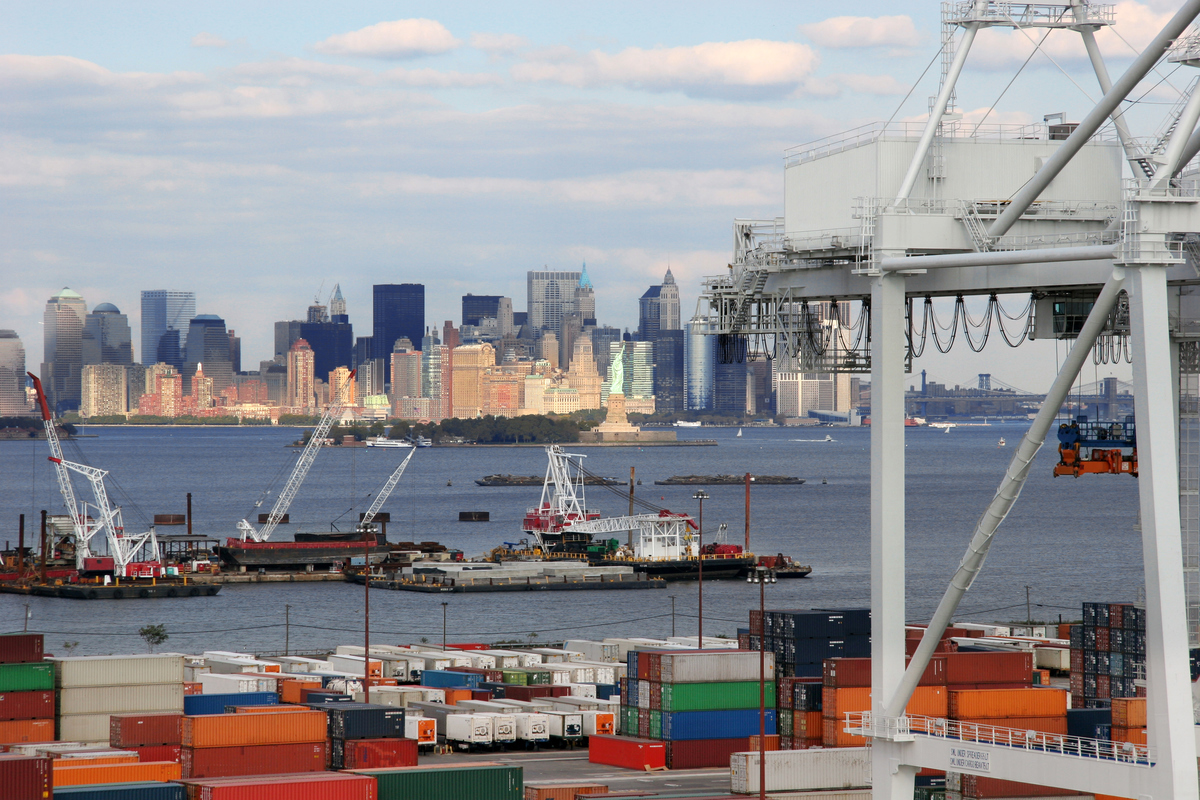 IMAGE: Aerial view of an industrial harbour in New York. Getty Images.
IMAGE: Aerial view of an industrial harbour in New York. Getty Images.
North America
Bunker demand in Houston remains sluggish across all fuel grades, with spot premiums being low this week. In the past 24 hours, 75 vessels have arrived, and 134 ships are scheduled to arrive over the next 30 days.
VLSFO and LSMGO are available at the port directly via pipe for prompt delivery with recommended lead times of 3-5 days.
HSFO is only available by barge and needs terminal approval and checks before a barge can be brought alongside. Lead times stand at 7-10 days, a source said.
The US Gulf hurricane season has begun, and although there haven't been significant weather disruptions so far, conditions are expected to deteriorate in the coming weeks.
The Port of Corpus Christi completed an upgrade to its ship channel, deepening it from 47 to 54 feet and widening it from 400 to 530 feet over approximately 11.9 miles.
This will allow vessels with deeper drafts to transport cargo via the channel.
In Galveston, pilot restrictions are in place that require vessels to begin transit at least two hours before sunset and not before sunrise.
Vessels over 120,000 deadweight tonnage (DWT) are currently restricted to arriving and departing only during daylight hours.
They may be shifted or turned at night within the ports of Galveston or Texas City.
According to a source, these vessels will be permitted to sail from Bolivar Roads at night, but for all such movements, a second pilot is required.
In the Galveston Offshore Lightering Area (GOLA), deliveries continue on a first-come, first-served basis, subject to weather conditions.
In New York, bunker demand from container liners remains steady, while activity in the spot market remains modest compared to last week.
All fuel grades are available at the port for prompt delivery, with suppliers recommending lead times of between 3-5 days.
New York is forecast to experience brief periods of high wind gusts between 5-8 June.
While no significant backlog congestion or bunker barge readiness issues are reported, these wind gusts could intermittently disrupt bunker deliveries.
Bunker fuel availability and demand at the Port of Los Angeles remain steady, with suppliers advising lead times of 7 days.
Import volumes at the Port of Los Angeles showed a week-on-week increase during the week of 1-7 June, 91,937 TEUs were scheduled across 16 vessels, representing a 32.74% rise from the previous week.
The following week, 8-14 June, import volumes are expected to further increase to 98,944 TEUs with 17 vessels scheduled, marking a 7.62% growth compared to the prior week.
However, despite this weekly growth, import volumes remain down compared to last year, with a 7.05% decline this week and a sharper 15.35% drop in the upcoming one.
Persistent high shipping costs are prompting importers to remain cautious with their planning, the Executive Director of the Port of Los Angeles, Gene Seroka, warned.
Montreal is expected to face possible disruption from 7-9 June due to high wind gusts. Backlog congestion is a concern as barge operations are restricted to daylight hours, which may already limit delivery windows.
High winds could further constrain bunker operations, increasing the risk of delivery delays and congestion.
Latin America and Caribbean
In Panama, the market remains very quiet, with some suppliers currently waiting for resupply.
VLSFO and LSMGO availability is good with lead times of 5–7 days, but HSFO supply is very limited, requiring lead times of over 7 days.
In Balboa, deliveries are on a first come, first serve basis, with priority for vessels with confirmed transit schedules through the Panama ship canal.
Drought conditions continue to impact transit through the Panama canal, leading to delays in vessel movements, particularly for deep draft vessels.
However, regarding bunker deliveries, a source noted, “Bunker deliveries take place at the outer anchorages, ensuring they remain unaffected.”
Bahamas' Freeport is flagged for possible disruption today due to high wind gusts. Deliveries are conducted at anchorage, and cruise ships take priority, which could delay bunker supply for other vessels.
Similarly at St. Eustatius deliveries are done at anchorage, with cruise ships taking priority. Currently no congestion issues are noted, a source noted.
In Argentina’s Bahia Blanca, the expansion and new berth at Oiltanking’s Otamerica terminal were officially inaugurated on Wednesday.
Oiltanking is an operator of tank storage facilities, and its Otamerica terminal in Puerto Rosales plays a crucial role in handling and exporting crude oil from the nearby Vaca Muerta shale field.
The terminal’s storage capacity has increased from 480,000 to 780,000 cubic meters. Alongside this, a new berth capable of handling two tankers, one Aframax and one Suezmax, each equipped with two loading arms is under construction.
The berth expected to be operational by August 2025.
Vaca Muerta is currently producing over 138,000 barrels per day, with output steadily rising alongside increasing exports. This growth has helped position Argentina as the third-largest crude oil producer in South America, behind Venezuela and Brazil, recently surpassing Colombia, Antares Ship Agents informed.
VLSFO availability in Zona Comun remains tight, with lead times of 12 to 14 days. Recent strong wind gusts caused frequent delivery suspensions. Currently operations are undergoing at the port.
Deliveries continue on a "first come, first serve" basis at the anchorage.
In Brazil, bunker fuel availability remains steady in the ports of Santos, Rio De Janeiro and Rio Grande. VLSFO and LSMGO are available for prompt delivery with lead times of 5-7 days.
The port of Santos is currently congested and is expected to clear in the next 5 days.
Bunker fuel availability in the Columbian ports of Barranquilla, Cartagena and Santa Marta remains steady with recommended lead times of 2-3 days, a source noted
By Gautamee Hazarika
Please get in touch with comments or additional info to news@engine.online

Contact our Experts
With 50+ traders in 12 offices around the world, our team is available 24/7 to support you in your energy procurement needs.

